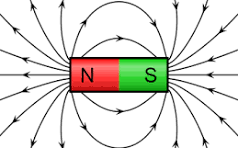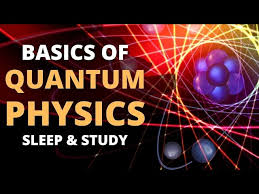
Magnetism and Electromagnetism – HNK Globals
Description:
Magnetism and electromagnetism are fundamental phenomena in physics that play a crucial role in our understanding of natural forces and their practical applications. Magnetism is the force exerted by magnets when they attract or repel each other or other materials like iron. Electromagnetism, on the other hand, is the interaction between electric currents and magnetic fields, forming the basis for many modern technologies. These fields are intricately connected, as an electric current generates a magnetic field, and a changing magnetic field induces an electric current. From powering our homes to enabling wireless communication, magnetism and electromagnetism are central to innovation in science and technology.
Key Concepts in Magnetism and Electromagnetism:
Magnetic Fields
- A magnetic field is the invisible field around a magnet or electric current where magnetic forces can be felt. It is visualized using magnetic field lines that represent the direction and strength of the field.
Magnetic Poles
- Magnets have two poles: north and south. Opposite poles attract, while like poles repel. These poles are where the magnetic force is strongest.
Electromagnetic Induction
- Discovered by Michael Faraday, electromagnetic induction refers to the generation of an electric current by changing the magnetic field in a conductor. This principle is used in generators and transformers.
Electromagnets
- An electromagnet is a temporary magnet created by passing an electric current through a coil of wire wrapped around a core, usually made of iron. They are widely used in motors, relays, and cranes.
Magnetization
- Materials can be magnetized by aligning their internal magnetic domains. Permanent magnets retain this alignment, while temporary magnets lose it when the external magnetic field is removed.
Lorentz Force
- The Lorentz force is the force experienced by a charged particle moving through a magnetic field. It is the basis for many electromagnetic devices, such as cyclotrons and mass spectrometers.
Magnetic Flux
- Magnetic flux is a measure of the strength and extent of a magnetic field passing through a given area. It is essential in calculating induced electromotive force (EMF) in a circuit.
Faraday’s and Lenz’s Laws
- Faraday’s law explains how a change in magnetic flux induces an EMF in a circuit, while Lenz’s law describes the direction of the induced current, opposing the change in flux.
Magnetic Materials
- Materials are classified based on their magnetic properties: ferromagnetic (iron), paramagnetic (aluminum), and diamagnetic (copper). Each type interacts with magnetic fields differently.
Applications of Magnetic Resonance
- Techniques like MRI (Magnetic Resonance Imaging) use magnetic fields and radio waves to produce detailed images of the body’s interior, revolutionizing medical diagnostics.
Applications of Magnetism and Electromagnetism:
Electric Power Generation
- Generators convert mechanical energy into electrical energy using electromagnetic induction, forming the backbone of power plants worldwide.
Electric Motors
- Electromagnetism powers electric motors, which convert electrical energy into mechanical energy for use in vehicles, appliances, and industrial machines.
Communication Technologies
- Electromagnetic waves are essential in wireless communication systems, including radio, television, and mobile phones.
Transformers
- Transformers use electromagnetic induction to step up or step down voltage levels in power transmission, ensuring efficient energy delivery over long distances.
Magnetic Storage Devices
- Hard drives and credit cards use magnetic fields to store and retrieve data, making magnetism vital in the field of information technology.
Transportation Systems
- High-speed trains, such as maglev trains, use magnetic levitation powered by electromagnets to achieve incredible speeds with minimal friction.
Medical Applications
- Techniques like MRI and magnetic therapy rely on magnetic fields to diagnose and treat various conditions, demonstrating the importance of magnetism in healthcare.
Sensors and Actuators
- Magnetic sensors are used in various applications, from vehicle speedometers to industrial automation systems.
Electromagnetic Waves
- Applications of electromagnetic waves include X-rays in medicine, infrared in remote controls, and microwaves in cooking.
Space Exploration
- Magnetometers are used in space missions to study planetary magnetic fields, providing insights into planetary formation and composition.
Why Choose HNK Globals for Magnetism and Electromagnetism Studies?
Comprehensive Curriculum
- HNK Globals offers a curriculum that bridges theoretical foundations with practical applications, ensuring students understand both the principles and real-world relevance of magnetism and electromagnetism.
Innovative Learning Methods
- Hands-on experiments and interactive simulations help students grasp complex concepts like electromagnetic induction and magnetic field interactions.
Experienced Instructors
- Learn from leading experts in physics and engineering who bring years of teaching and research experience to guide students in mastering the subject.
Cutting-edge Facilities
- Access advanced labs equipped with the latest tools for studying magnetic fields, electromagnetic waves, and related technologies.
Career Opportunities
- With a focus on industry applications, our courses prepare students for careers in renewable energy, medical technology, aerospace, and electronics.
Discover the fascinating world of Magnetism and Electromagnetism at HNK Globals. Unlock your potential to innovate and transform the future of science and technology!








